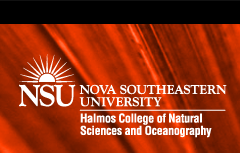Event Title
Frozen Brain Atlas Internship
Location
Sales Institute, CarlDeSantis building 3rd floor
Start Date
27-10-2015 12:00 PM
End Date
27-10-2015 1:00 PM
Description
The Frozen Brain Atlas provides students, educators, and sci entists with a tool to further explore the architecture of the brain. Current brain atlases allow users to navigate sectioned brain tissue using histological staining; however, they fail to capt ure naturally visible structures post sectioning. Through immediate post sectioning image co llection, the natural contrast of the brain reveals unique structural details that are rarely seen by tra ditional staining procedures. By utilizing indexing and interactive labeling, the Nova Southeastern University Frozen Brain Atlas will allow identification of brain regions when used a s a correlative tool for modalities including receptor autoradiography, immunofluorescence, and other anato mical methods.
Frozen Brain Atlas Internship
Sales Institute, CarlDeSantis building 3rd floor
The Frozen Brain Atlas provides students, educators, and sci entists with a tool to further explore the architecture of the brain. Current brain atlases allow users to navigate sectioned brain tissue using histological staining; however, they fail to capt ure naturally visible structures post sectioning. Through immediate post sectioning image co llection, the natural contrast of the brain reveals unique structural details that are rarely seen by tra ditional staining procedures. By utilizing indexing and interactive labeling, the Nova Southeastern University Frozen Brain Atlas will allow identification of brain regions when used a s a correlative tool for modalities including receptor autoradiography, immunofluorescence, and other anato mical methods.


Comments
The trick to the treat of an internship or research fair is an annual event presented by the Halmos College of Natural Sciences and Oceanography and NSU’s Office of Career Development. The event showcases the many internship opportunities offered by NSU to its undergraduate students.